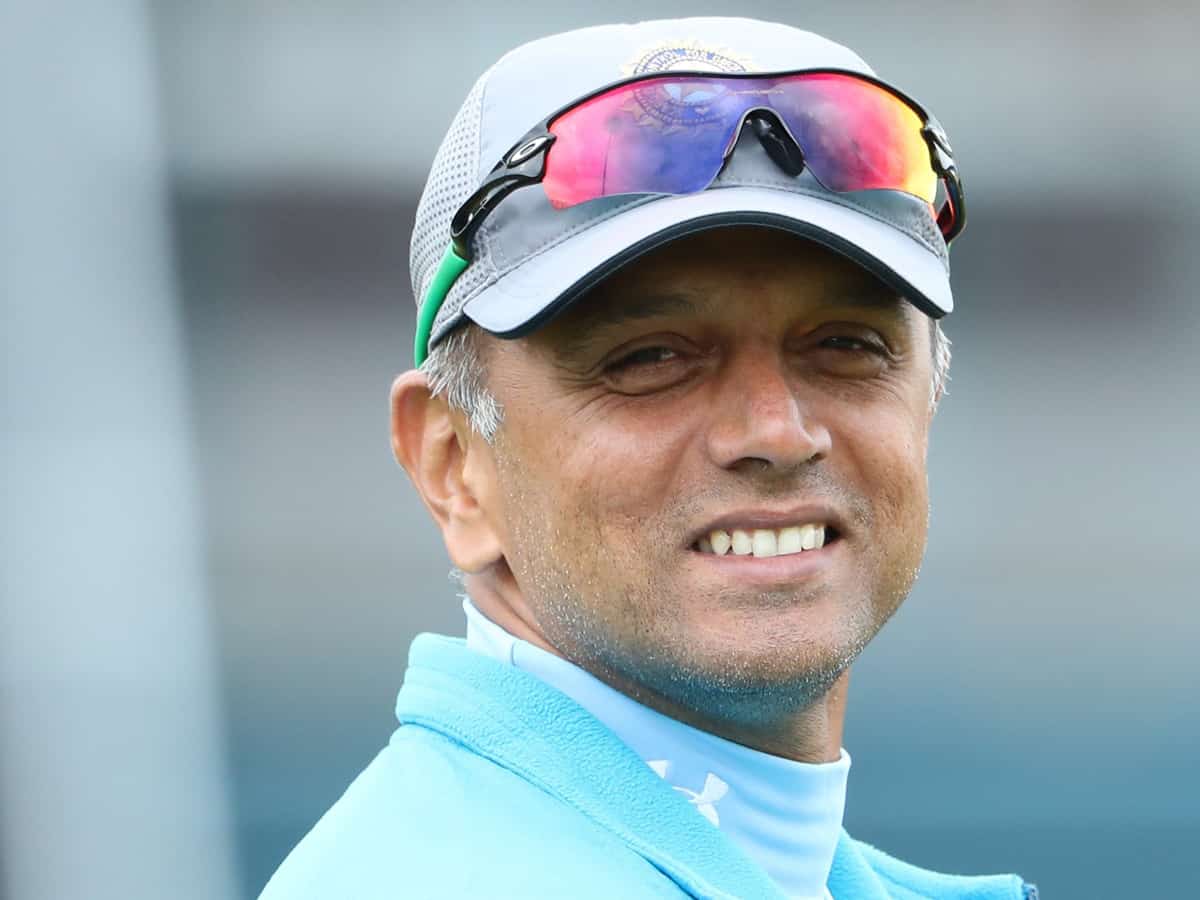
Bridgetown: Rahul Dravid’s tenure as India’s head coach, which got a glorious closure with the T20 World Cup triumph here, will remain a case study on how to be stately and understated at the same time in modern-day cricket coaching.
But even ‘The Wall’ crumbled when emotions took charge at the end of an 11-year-long title drought.
As soon as he got a feel of the trophy, which was respectfully brought to him by player of the match Virat Kohli, Dravid let out a roar so ferocious that it seemed he was finally letting out the emotions that he works so hard to hide while in public glare.
It was a moment that was so unlike Dravid, who hardly gave a quote that could fire up the imagination of the headline desk, but remained committed to his job in a rather Gary Kirsten way.
But that minimalism can never mask the challenges Dravid had to tame during his draining, overwhelming close to three years shepherding the most followed cricket team on this planet.
In fact, the scrutiny of Dravid began even before his appointment as the head coach. He was projected as the ‘Next One’ while guiding India during a short white ball series against Sri Lanka in mid-2021.
It was his audition — a real-time interview to see how he would cope with the demands of a high-pressure post — before he landed the job full-time in November that year.
From the outset, Dravid — fair or unfair — had to match up to the lofty legacy of his predecessor Ravi Shastri, under whom India had a fine run including back-to-back away series win in Australia, the Holy Grail of Test cricket for teams from the sub-continent.
While Dravid never got a chance to tour Down Under as a coach, he tamed the Antipodeans at home in different formats.
But a defeat and a drawn Test series against a ‘weaker’ South African side will rankle Dravid, for whom wins away from home always stood as the gold standard.
These are the routine obstacles that are endured by any coach. But Dravid had to face harsher tests which were unique to the Indian cricketing culture.
He was managing a dressing room full of superstars, an environment he was not very unfamiliar with from his playing days.
And he was well aware that even the slightest discord would be blown out of proportions.
Rewind to the exit saga of Anil Kumble’s tenure and eventual ouster.
But Dravid had this priceless ability to gauge people and situations, and he channelised that into his coaching stint.
He put in place his methods without trying to dismantle the existing system, creating a balanced atmosphere with captain Rohit Sharma for players to excel.
Mohammed Siraj is a telling example. The pacer began his journey during the regime of Shastri, but flowered into an all-format bowler under the tutelage of Dravid.
However, he did not always have calm seas to navigate.
To begin with, three frontline batters — Virat Kohli, Ajinkya Rahane and Cheteshwar Pujara — were gradually slipping out of the hot zone.
Kohli, who was always going to get the longer end of the rope, made Dravid’s job easier, regaining some of his scoring ways but the other two reached their sell-by date as top-flight batters.
Their failure to deliver in the World Test Championship final against Australia in London last year hastened their walk towards the exit gate.
But Pujara and Rahane were the bulwarks of the Indian middle-order for long and the transition process had to be delicately dealt with.
Here Dravid leaned on his immense experience of working with players during the ‘A’ tours and other such developmental stages.
Realising the enormity of his task early, Dravid handed Shreyas Iyer a debut in his first Test series as coach — against New Zealand at home.
Iyer did not disappoint him either, making a hundred. Ironically, Iyer along with Ishan Kishan, two cricketers in whom Dravid invested heavily, were in the eye of a storm later, eventually leading to the duo missing a BCCI central contract.
Oddities apart, Dravid’s way was not really flawed, and he extended it to the ODIs too, where he focused on building a wider pool of young players.
It was a trait Dravid developed from his captaincy days when the Bengaluru man and then coach Greg Chappell tried out several young players like Suresh Raina, Y Venugopala Rao, and Rudra Pratap Singh with varying degree of success.
Dravid adopted a similar strategy alongside Rohit, pushing forward talents like Shubman Gill, Kishan, Yashasvi Jaiswal and Siraj and Suryakumar Yadav, who had to wait for consistent chances under the previous dispensation.
They vindicated the faith placed on them while carrying India to the Asia Cup title in Sri Lanka last year, where Gill and Siraj topped India’s batting and bowling charts respectively.
However, in the deepest corners of his mind Dravid will rue the missed chance of winning the 50-over World Cup at home after his side succumbed to Australia in the final.
The World Cup win at Barbados might have eased that pain considerably, but it, surprisingly, came in a format where Dravid, much against his schtick, largely followed the conventional path.
This is not to say that Dravid was out of sync with this format as demonstrated on Saturday.
So, how will Dravid’s coaching stint be remembered?
The World Cup victory will certainly occupy a large chunk of the public memory space.
However, above that, the flawless handling of a team of high-profile individuals will be the legacy for his successor to live up to. It’s daunting too.
